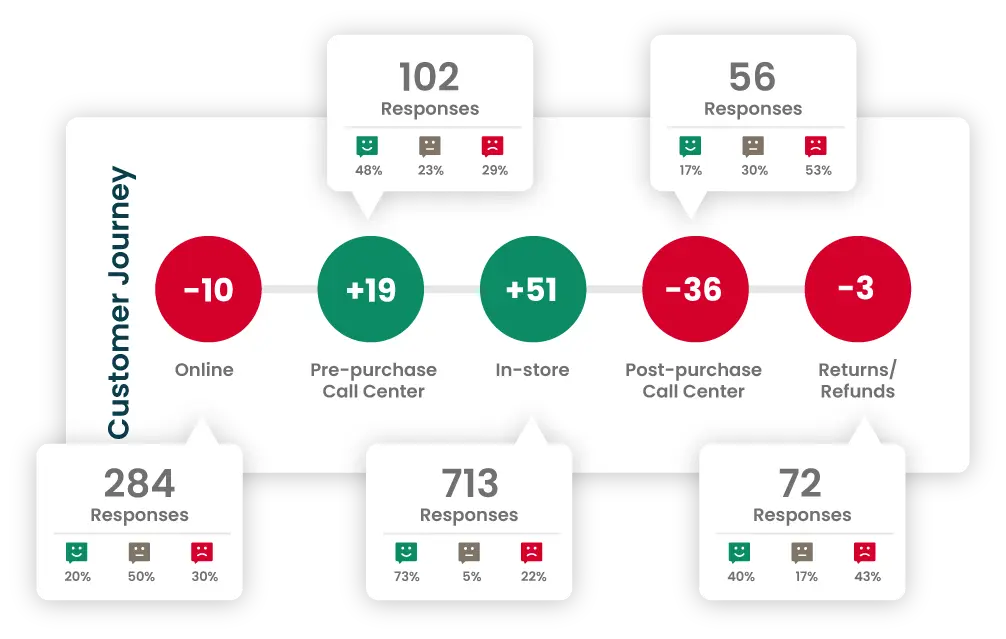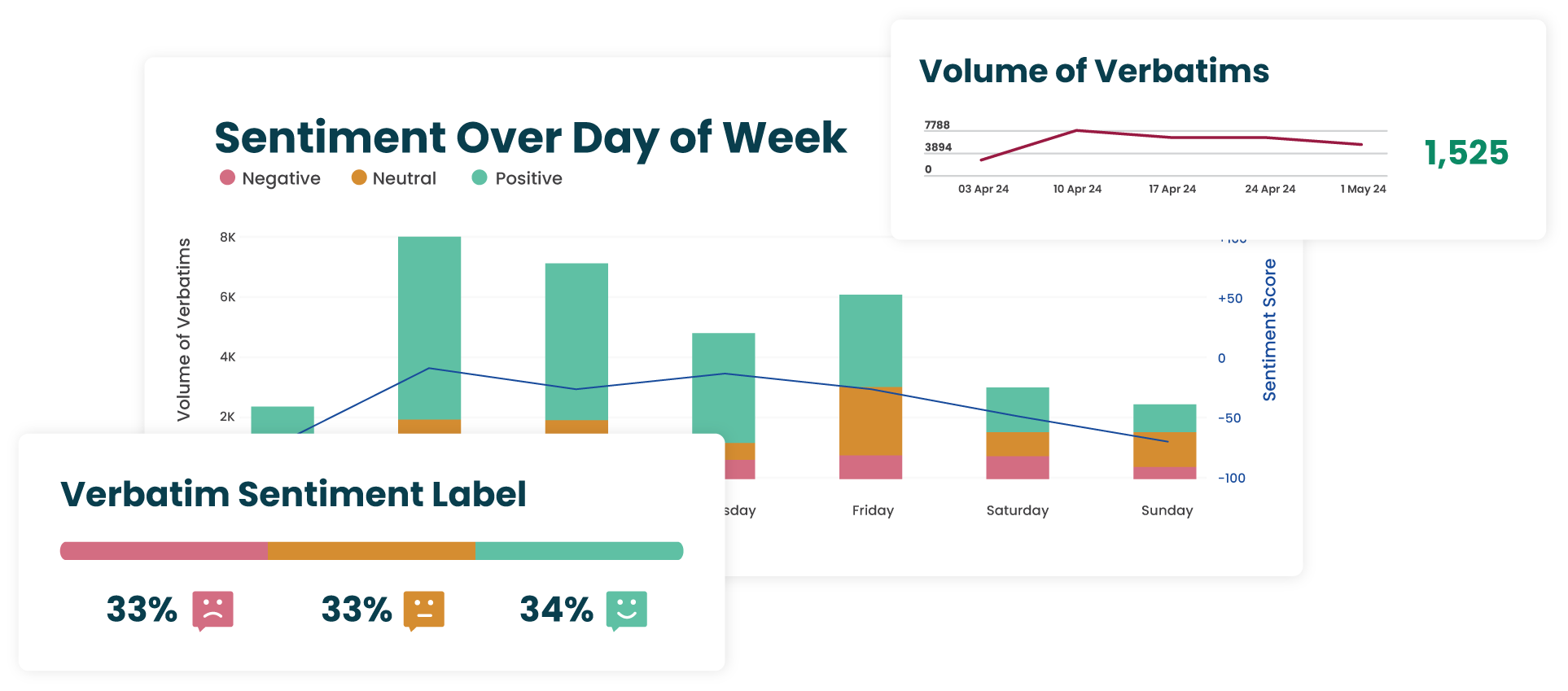Let’s face it, nobody enjoys shopping when it feels like a chore. You walk into a store, get bombarded with a dizzying array of products, and can’t find a single salesperson to answer your questions. Frustration builds, and by the time you reach the checkout, you’re ready to chuck your basket at the cashier and storm out (metaphorically, of course… unless the line is really long).
This, my friends, is the dark side of the customer journey – a treacherous path riddled with pain points that can turn even the most enthusiastic shopper into a grumpy gremlin. But fear not, valiant retail warriors! Understanding these pain points is your kryptonite detector, the key to crafting a shopping experience smoother than butter on a hot waffle.
But before we delve into the nitty-gritty, let’s take a quick pit stop to map out the customer journey. Imagine it like a video game – there are different levels (Pre-Shop Research, In-Store Experience, and Post-Purchase Stage), and at each level, there are obstacles your customers need to overcome. Your job? To identify those obstacles (pain points) and zap them with solutions that make the entire experience a victory lap.

In this report, you’ll learn:
Retail CX Insights Market Report 2025
Understanding a Retail Customer Journey: A Retailer’s Roadmap to Success
Want your store to be an epic adventure, not a shopping chore? Understanding the retail customer journey is your secret weapon. It’s not a straight shot, but a series of interconnected stages – think of it like a choose-your-own-adventure for happy shoppers.
Stage 1: Pre-Shop Research
This is where the magic begins! Customers hit the web, researching products, comparing prices, and soaking up reviews. They’re info warriors on a mission – help them find what they need!
Stage 2: In-Store Experience
Brick-and-mortar or digital haven, this is where the physical meets the digital. Think: customers using smartphones to check stock or reviews in-store. It’s a blended reality, and you need the perfect recipe.
Stage 3: Post-Purchase
Don’t drop the ball after the sale! This stage is about stellar customer service, smooth returns, and those little “thank you” emails that go a long way. Keep the good vibes flowing, and they’ll be back for more.
Key Customer Pain Points at Each Stage and How to Solve Them
Pre-Shop Research and Discovery: Pain Points and Solutions
Problem 1: Information Overload
In the digital age, customers face a barrage of information from various sources, including e-commerce sites, social media platforms, and email marketing. Each platform bombards users with multiple options and features, presenting a significant challenge in determining which information is essential and trustworthy. This overload can lead to decision fatigue, where customers feel overwhelmed by choices to the point that it impedes their ability to make a clear decision.
Solutions:
- Smart Search & Filtering: Employ AI-powered search functions that understand user intent and personalize results based on past searches and preferences.
- Product Curation & Recommendations: Showcase curated product collections and provide personalized recommendations based on user data and browsing behavior.
- Credibility Indicators: Implement badges or labels that highlight trustworthy sources and user-generated reviews.
Problem 2: Lack of Visual Content
Visual content plays a crucial role in online shopping, where the inability to physically inspect products can be a barrier. Poor-quality images, lack of multiple angles, or absence of high-resolution visuals can deter customers from proceeding with a purchase.
Solutions:
- High-Quality Images
Provide multiple, high-resolution images of products from various angles. Consider 360-degree views and zoom functionality for detailed inspection. - Interactive Content
Incorporate interactive features such as virtual try-on (clothing), 3D product models, or augmented reality experiences for a more immersive shopping experience. - User-Generated Content
Encourage customers to share photos and videos showcasing the product in use.
Problem 3: Unreliable Reviews
Reviews and testimonials are vital in influencing buyer decisions. However, the presence of fake reviews or a lack of detailed feedback can undermine trust in the product. Customers rely heavily on the experiences of others to gauge a product’s effectiveness and quality
Solutions:
- Verification Systems
Implement mechanisms to verify reviewer identities and purchase history to deter fake reviews. - Detailed Feedback Prompts
Encourage detailed reviews by prompting for specific product aspects and user experiences. - Community Management
Actively monitor reviews, address concerns, and highlight helpful and insightful feedback.

Problem 4: Disconnected Online & In-Store Experience
A seamless transition between online browsing and the in-store shopping experience is crucial for customer satisfaction. Yet, discrepancies in information like stock levels and pricing between a retailer’s online and physical outlets often lead to customer frustration. When a customer finds a product online at a certain price but discovers a different price or stock status in the store, it undermines trust in the retailer and can deter future interactions both online and in-store.
Solutions:
- Implement Real-Time Inventory Management
Using real-time inventory management systems that sync online and in-store stock levels helps maintain consistency across channels. This ensures that customers receive accurate information whether they’re shopping online or in-store, improving their trust and satisfaction with the retailer. - Unified Pricing Across Channels
Inconsistent pricing between online and in-store channels can create confusion and erode customer trust. By maintaining consistent pricing across all shopping channels, retailers provide a seamless experience, preventing unpleasant surprises and fostering customer confidence. This approach also aligns with customers’ growing expectation of an omnichannel experience. - Enable Online Purchase for In-Store Pickup:
Bridging the gap between digital and physical shopping is essential for modern retailers. Allowing customers to buy online and pick up in-store offers flexibility and convenience, combining the ease of online shopping with the immediacy of in-store fulfillment. This integration appeals to customers who want the best of both worlds and enhances the overall shopping experience.
Problem 5: Lack of Product Information in-store
Today’s consumers are accustomed to having a wealth of information at their fingertips when shopping online, including detailed product specifications, user reviews, and side-by-side comparisons. When physical stores fail to provide a similar level of detail, it can lead to a disconnect in the customer experience.
The absence of readily available digital information within the store environment can prevent customers from making informed purchasing decisions, potentially leading to dissatisfaction and lost sales.
Solutions:
- Integrate Digital Signage
Providing detailed product information, user reviews, and comparison features via digital signage enhances the in-store experience by giving customers the data they need to make informed decisions. Digital signage can be updated in real-time, keeping information current and relevant, and creating an interactive and engaging shopping environment. - Utilize QR Codes
Allowing customers to scan QR codes or product tags with mobile phones to access rich product details leverages mobile technology to enhance the in-store experience. QR codes can link to detailed specifications, reviews, or even demonstration videos, providing a wealth of information that empowers customers and enriches their shopping journey. - Interactive Displays
Setting up interactive kiosks or tablets where customers can explore products deeply on their own provides a self-service solution for those seeking more information. These interactive displays allow customers to engage with product details at their own pace, improving their experience and potentially increasing their confidence in their purchasing decisions.
Problem 6: Ineffective Digital Tools In-Store
The effectiveness of in-store digital tools such as apps, kiosks, and digital signage directly impacts the customer’s ability to navigate, explore, and interact with products efficiently. Clunky interfaces, malfunctioning equipment, and poorly designed digital resources can significantly hinder the shopping experience, causing frustration and potentially driving customers away.
Solutions:
- Invest in User-Friendly In-Store Apps
Developing user-friendly in-store apps that assist with product scanning, information retrieval, and personalized recommendations enhances the customer experience by making information and assistance readily accessible. These apps should be intuitive and helpful, facilitating a smooth and enjoyable shopping experience. - Wayfinding Functionalities
Incorporating wayfinding tools in apps to help customers locate products easily within the store enhances navigation and reduces frustration. This functionality helps customers quickly find what they’re looking for, improving their overall experience and increasing the likelihood of a positive shopping outcome. - Regular Maintenance and Updates
Ensuring that digital tools like kiosks and signage are regularly updated and maintained prevents malfunctions and ensures smooth operation. Regular maintenance and updates keep these tools functioning optimally, providing a reliable and frustration-free customer experience.
Problem 7: Unprepared or Uninformed Staff
Staff who are unprepared or lack sufficient knowledge about the products they are selling, as well as how to integrate digital tools with traditional in-store service, can significantly detract from the customer experience. Employees are often the face of the retail brand; their ability to provide valuable information and resolve issues efficiently plays a critical role in the success of the store’s customer service efforts
Solutions:
- Comprehensive Digital Integration Training
Training staff extensively on how to use digital tools in enhancing customer service prepares them to effectively assist customers and troubleshoot issues. Comprehensive training ensures that employees are confident and capable when using digital tools, enhancing their effectiveness and improving the customer experience. - Product Knowledge Programs
Running ongoing training programs to deepen staff’s product knowledge equips them to provide informed and helpful service to customers. Product knowledge programs ensure that employees can confidently answer questions and offer valuable insights, enhancing the customer experience and building trust in the retailer. - Role-Playing and Simulations
Using role-playing scenarios to help staff practice and improve their interaction and problem-solving skills prepares them for real-world situations. These exercises improve communication skills, enhance customer service, and equip employees to handle various challenges, ultimately benefiting the customer experience.
Problem 8: Friction at Checkout
The final stage of the in-store customer journey is checkout, where efficiency and convenience are paramount. This stage is crucial as it leaves a lasting impression on the customer. Any disconnect between online accounts and in-store systems, such as loyalty programs or promotional offers, along with slow or complicated checkout processes, can create significant friction. Forcing customers to rely on traditional checkout methods with limited mobile wallet integration can lead to long wait times and frustration, ultimately impacting customer satisfaction.
Solutions:
- Seamless Loyalty Integration
Ensuring that online accounts and loyalty programs are fully integrated with in-store systems provides a cohesive customer experience. Seamless integration prevents frustration and confusion, enhancing the checkout experience and reinforcing customer loyalty. - Mobile Wallet and Self-Checkout
Implementing mobile wallet payments and streamlining self-checkout processes reduces wait times and enhances convenience. These digital solutions cater to modern customers’ preferences for fast and efficient service, improving the checkout experience and leaving a positive final impression. - Provide Clear Instructions and Support
Offering clear guidelines and support for all checkout options helps customers navigate the process easily and confidently. Providing assistance and clarity during checkout reduces frustration and enhances the overall shopping experience, ensuring customers leave with a positive impression.
Post-Purchase Support and Engagement: Pain Points and Solutions
Problem 9: Inconvenient Return & Exchange Policies
Return and exchange policies that are difficult to navigate can significantly detract from the customer experience. Complex procedures for returning items, unclear timelines for when refunds or exchanges will be processed, or limited options for where items can be returned can all contribute to customer frustration and dissatisfaction. This inconvenience may deter future purchases, as customers prefer retailers that provide a hassle-free return process.
Solutions:
- Simplify Return Procedures
A convoluted return process can discourage customers from purchasing or cause dissatisfaction when they want to return a product. Streamlining the return process with clear guidelines, straightforward instructions, and extended return periods can make it more customer-friendly. This approach reduces the friction that customers face when returning items and enhances their confidence in shopping with the retailer again. - Multiple Return Options
Offering multiple return options such as in-store drop-off, mail-in returns, or partnered pick-up locations provides customers with flexibility and convenience. By accommodating different preferences and situations, retailers can make the return process more accessible and less stressful, thereby improving the overall customer experience. - Clear Communication of Policies
Clear and transparent communication about return and exchange policies is crucial for customer satisfaction. When customers know exactly what to expect, including timeframes and conditions, they feel more at ease about their purchase decisions. Providing this information clearly on the website, on receipts, and through customer support ensures that customers are well-informed and confident in their ability to make returns or exchanges.
Problem 10: Lack of Order Tracking Transparency
After making a purchase, customers expect to be kept informed about the status of their order. However, when updates are infrequent, unclear, or entirely absent, it can lead to uncertainty and frustration. This lack of transparency can diminish trust in the retailer and negatively affect the customer’s purchasing experience. Customers left in the dark about their deliveries, with unreliable tracking and unclear communication, experience anxiety and frustration
This can damage brand trust and lead to dissatisfaction, potentially driving them to seek out more transparent retailers.
Solutions:
- Real-Time Order Tracking
Implementing systems that provide real-time updates via email, SMS, or dedicated apps gives customers a sense of control and clarity about their orders. This feature allows them to track their purchases every step of the way, reducing anxiety and enhancing their trust in the retailer’s reliability. - Detailed Delivery Updates
Including detailed information about the delivery process, such as estimated delivery windows and potential delays, helps manage customer expectations. By keeping customers informed about when their order is likely to arrive, retailers can prevent frustration and improve the overall delivery experience. - Easy Access to Delivery Proofs
Providing customers with easy access to delivery proof and other relevant shipping documents reassures them that their orders have been properly processed and delivered. This transparency builds trust and provides a safety net for any issues that might arise, such as lost or misplaced packages.
Problem 11: Difficult or Inefficient Customer Support
Effective customer support is crucial in resolving issues and maintaining positive customer relationships. Long wait times on phone lines, impersonal interactions with chatbots, or a lack of support across multiple channels can prevent customers from getting the help they need in a timely and satisfactory manner. Understaffed or poorly trained support services leave customers feeling frustrated and unheard.
Limited contact options force them to navigate inconvenient channels, leading to a drawn-out and impersonal experience. This ultimately damages brand loyalty and satisfaction.
Solutions:
- Diverse Customer Support Channels
Offering support through multiple channels like phone, live chat, email, and social media caters to different customer preferences and needs. This diversity ensures that customers can reach out for assistance in the manner that suits them best, enhancing their overall experience with the retailer. - AI-Powered Chatbots
Utilizing AI chatbots to manage simple inquiries and direct complex issues to human agents enhances the efficiency and effectiveness of customer support. These chatbots can handle routine questions quickly and accurately, freeing up human agents to focus on more complex or sensitive issues, thereby improving overall support quality. - Prioritize Efficiency and Training
Ensuring that support staff are well-trained and equipped to handle inquiries promptly and efficiently is vital for customer satisfaction. Efficient and knowledgeable support enhances the customer experience by resolving issues quickly and effectively, which can significantly impact the customer’s perception of the brand.
Problem 12: Unhelpful or Irrelevant Post-Purchase Content
In-Store Experience (Physical and Digital Integration): Pain Points and Solutions
Sending generic post-purchase emails or irrelevant product recommendations can detract from the personalized experience customers expect today. Such content may seem impersonal and disconnected from the customer’s actual needs and interests, potentially harming the relationship. Generic communications, devoid of personalization, fail to resonate with customers.
Solutions:
- Personalize Content Based on Customer Data
Leveraging purchase history to offer tailored product care tips, warranty information, and relevant upsells provides customers with useful and engaging content. This personalized approach makes post-purchase communication more valuable to the customer, enhancing their experience and increasing the likelihood of future purchases. - Conduct Post-Purchase Surveys
Utilizing surveys to gather customer feedback and refine future communications helps retailers understand what their customers need and want. This feedback loop allows for continuous improvement in post-purchase communication, ensuring that future interactions are more relevant and effective. - Offer Useful Product Recommendations
Providing recommendations that are truly complementary to the customer’s original purchase enhances their overall satisfaction and experience. These recommendations should be based on customer preferences and needs, ensuring they are helpful and relevant rather than generic or intrusive.
Where to Start and How to Scale Your CX Program
We’ve identified the customer pain points and discovered solutions to smooth the shopping experience. But with so many areas to address, where do you begin?
Here’s a quick guide that will help you navigate your roadmap for optimizing your retail CX program, taking you from initial steps to long-term success.
Starting Point: Understanding Your Customer Journey
- Map the Journey
Imagine your customer’s experience as a series of stages, from pre-shopping research to post-purchase interactions. Break it down further – online vs. in-store experiences may differ. Identify touchpoints where customers interact with your brand. - Identify Pain Points
At each stage, what are the obstacles or frustrations customers encounter? Common pain points include lack of product information, long lines, unhelpful staff, and unclear return policies.

Prioritize and Take Action:
- Quick Wins
Focus on addressing a few high-impact pain points that can be resolved quickly. This builds momentum and demonstrates your commitment to improvement. - Gather Customer Feedback
Surveys, social media analysis, and in-store feedback tools can provide valuable insights into customer sentiment.
Focus on Core Areas for CX Improvement:
- Omnichannel Experience
Ensure a seamless experience across all channels (website, app, physical store). Information, pricing, and promotions should be consistent. - Employee Training
Invest in training your staff on product knowledge, digital tools, and exceptional customer service practices. Empower them to resolve issues efficiently. - Personalization
Use customer data to personalize interactions and recommendations. This can be done through targeted marketing emails, suggested products based on browsing history, or loyalty programs.
Scaling Your CX Efforts:
- Data & Analytics
Track key metrics like customer satisfaction scores, conversion rates, and time spent on-site. Use data to measure the effectiveness of your CX initiatives and identify areas for further improvement. - Culture of Customer Centricity
Embed a customer-centric approach throughout your organization. Encourage employees to think about how their actions impact the customer experience. - Continuous Improvement
CX is an ongoing process. Regularly gather feedback, identify new pain points, and adapt your strategies to meet evolving customer needs.

Additional Tips:
- Leverage technology
Utilize AI chatbots for basic inquiries, implement self-checkout options, and explore virtual reality tools to enhance product visualization. - Partner with CX experts
Consider collaborating with consultants who specialize in customer experience optimization.
Summary and Key Takeaways:
So, you’ve waded through the trenches of pain points and emerged victorious. But don’t rest on your laurels just yet! Remember, the key to a thriving retail experience is constant improvement. Use the insights you’ve gained from this retail battlefield to craft a customer journey that’s smoother than a freshly paved road.
By implementing the solutions outlined here, you’ll transform your store from a frustrating maze into an epic adventure for your customers. They’ll breeze through pre-shop research with the help of smart search functions and curated product collections. In-store, they’ll find a seamless blend of physical and digital experiences, with clear information readily available at their fingertips.
And let’s not forget your incredible staff – equip them with the knowledge and tools they need to become customer service superheroes. Streamlined processes and clear communication will ensure a frictionless experience from start to finish.
But the story doesn’t end there. Foster long-lasting relationships with your customers by keeping them engaged after the sale. Personalized post-purchase communication, valuable content, and exclusive offers will keep them coming back for more.
Remember, in the ever-evolving retail landscape, the customer is king. By listening to your customers, understanding their pain points, and providing solutions that cater to their needs, you’ll be well on your way to building a loyal customer base and a thriving retail empire.








